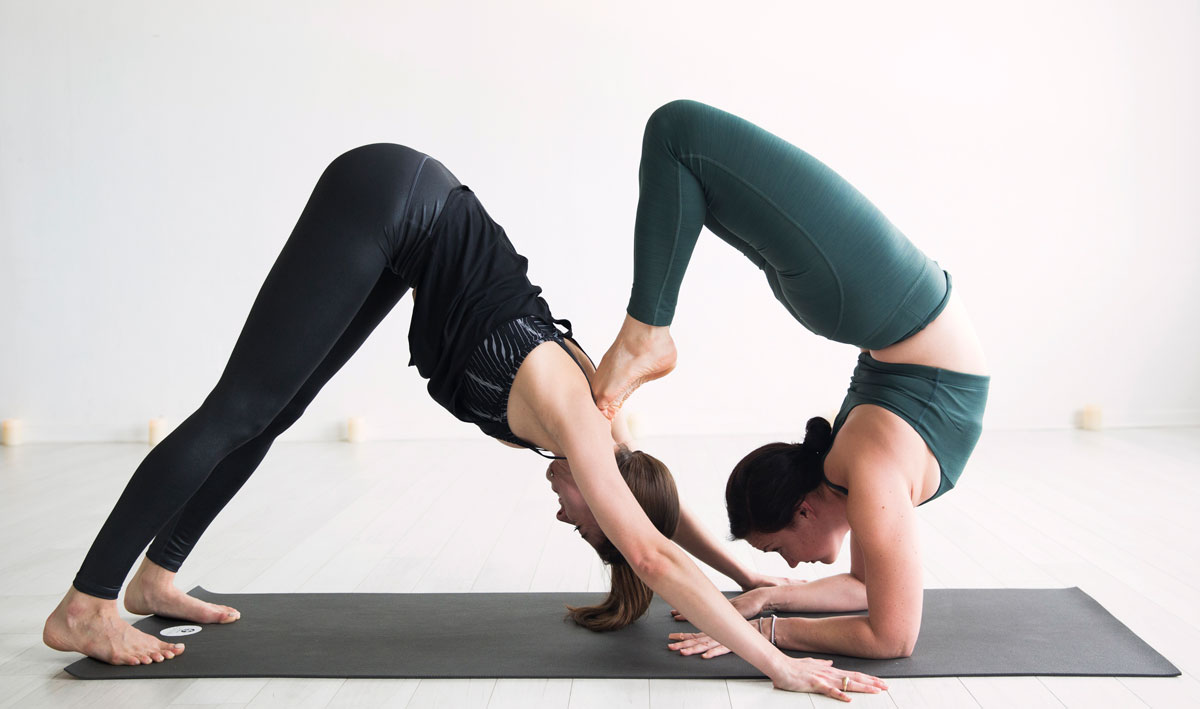
Getting Closer to the 5 Elements of Yoga
January 26, 2025
Based on the teachings of Ayurveda, the universe is made up of five great elements: air, water, fire, earth, and space. These elements offer their own qualities to our living experience and are the basis for our connection to the things around us.

These five components are part of our daily lives and are poured into everything we do. Including the practice of yoga. Yoga is a practice that travels out of a thought, feeling, or intention to a movement in the body and returns back to enlightenment.
The five elements move just like this and are the basic ingredients that combine together, creating our minds, bodies, and experience in living. Let’s explore each of these elements to respect our connection with everything, and return back to our inner selves.
Air (Vayu)
The Air element governs breath, movement, and circulation. It relates to your ability to expand, receive, and express freely. In yoga, Air is most obviously experienced through conscious breathing (pranayama) and expansive poses that open the chest and lungs. It also connects with mental clarity, communication, and the nervous system.
- Practice breathwork techniques such as Ujjayi or Nadi Shodhana to balance energy.
- Include heart-opening poses like Camel (Ustrasana) and Upward-Facing Dog (Urdhva Mukha Svanasana).
- Invite lightness into your flow by reducing tension and gripping in poses.
- Focus on inhaling fully and exhaling completely to create mental space.
Cultivating the Air element brings lightness, freedom, and a sense of expansion in both your body and mind.
Water (Apas)
The Water element symbolizes flow, adaptability, and emotional depth. It governs the fluid systems in the body, like blood, lymph, and synovial fluid, and influences your ability to move with grace and ease. In your yoga practice, Water shows up in your transitions between poses, your ability to release tension, and your openness to feeling emotions as they arise.
- Incorporate flowing sequences like Sun Salutations or gentle Vinyasa flows.
- Allow your breath to move fluidly, matching your movements.
- Practice hip-opening poses like Pigeon Pose (Eka Pada Rajakapotasana) to release emotional blockages.
- Let go of rigid expectations and follow the natural rhythm of your body.
When you embrace the Water element, you invite softness, surrender, and emotional healing into your practice.
Fire (Agni)
Fire represents energy, transformation, and inner strength. It’s responsible for digestion, not only of food but also of experiences and emotions. Fire in yoga is felt through strong, heat-building poses and the determination that helps you move through challenges. When balanced, Fire brings clarity, courage, and confidence.
- Engage in core-strengthening poses like Boat Pose (Navasana) and Plank.
- Use breath of fire (Kapalabhati) to stoke inner heat and focus.
- Explore twisting poses to support detoxification and energetic release.
- Move with intention and maintain steady discipline throughout your flow.
Connecting with the Fire element helps you build resilience, focus, and the power to transform both body and mind.
Earth (Prithvi)
The Earth element represents stability, grounding, and support. It is the foundation upon which all other elements rest, both in nature and in your physical body. In yoga, Earth is felt in the solidity of the bones, the steadiness of standing postures, and the calm that comes from being fully present. Practicing with awareness of the Earth element helps cultivate patience, strength, and a sense of rootedness.
- Focus on grounded standing poses like Mountain Pose (Tadasana) and Warrior II (Virabhadrasana II).
- Use slow, steady breathing to anchor yourself during transitions.
- Press firmly into the mat through your feet or hands to feel supported.
- Practice mindfulness to enhance your connection with the present moment.
Tuning into the Earth element can help you feel more stable, calm, and centered both on and off the mat.
Space (Akasha)
Space, or Ether, is the subtlest of all the elements. It is the container for all experiences and the source of spacious awareness. In yoga, Space is felt in moments of stillness, silence, and deep connection to something beyond the physical. It represents potential, openness, and the spiritual dimension of your practice.
- Spend time in quiet, meditative poses like Seated Meditation or Corpse Pose (Savasana).
- Create pauses between movements to tune in to subtle sensations.
- Practice sound meditation or chanting to connect with inner vibration.
- Let go of physical striving and turn attention inward toward spacious presence.
Honoring the Space element allows you to access deep peace, clarity, and the wisdom that comes from simply being.
We naturally relate to one element more easily than others. In our yoga practice, we want to explore a balance of the elements to bring harmony to our life. Which element do you connect with more in your practice? Join a class at Uptown Yoga Dallas and experience the healing properties of bringing the elements into balance.




